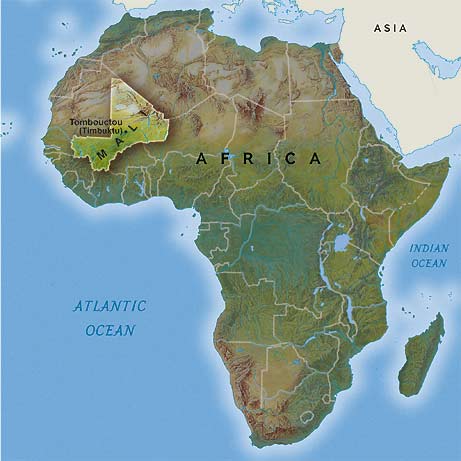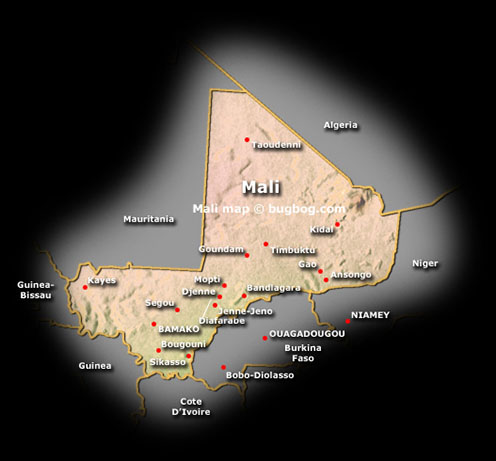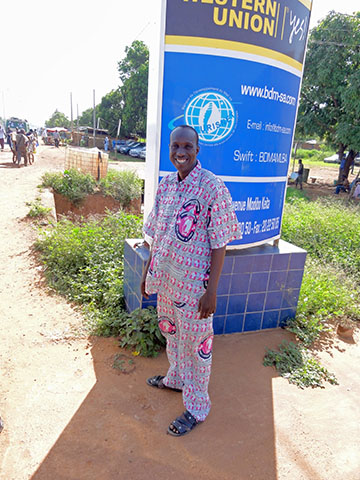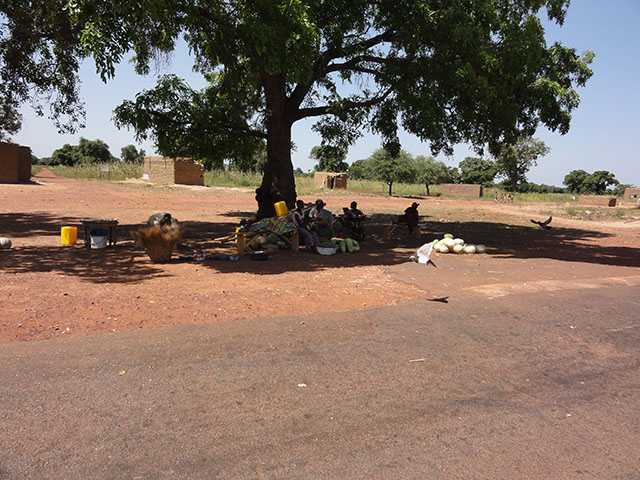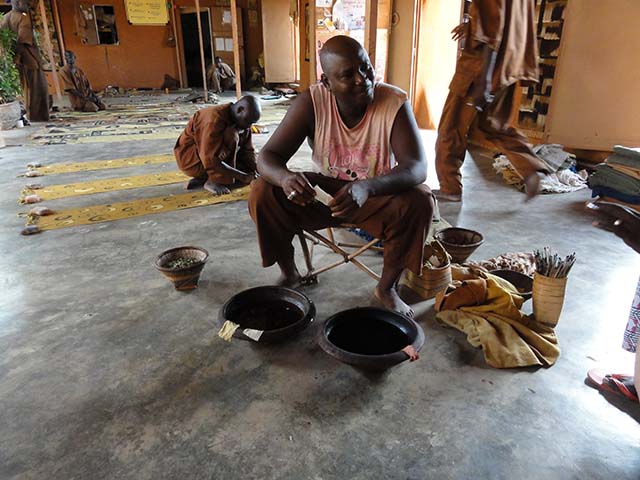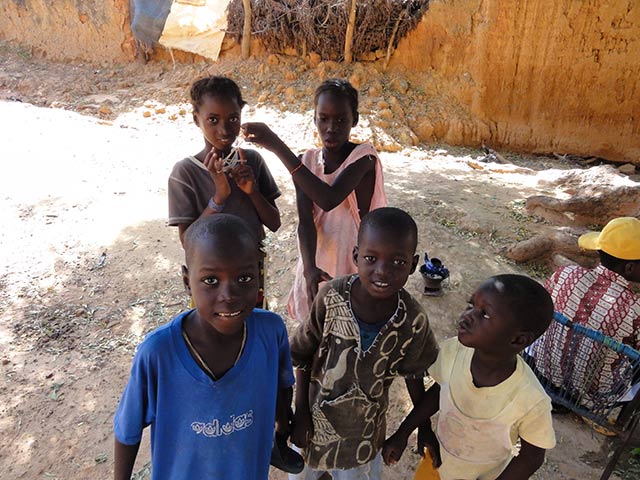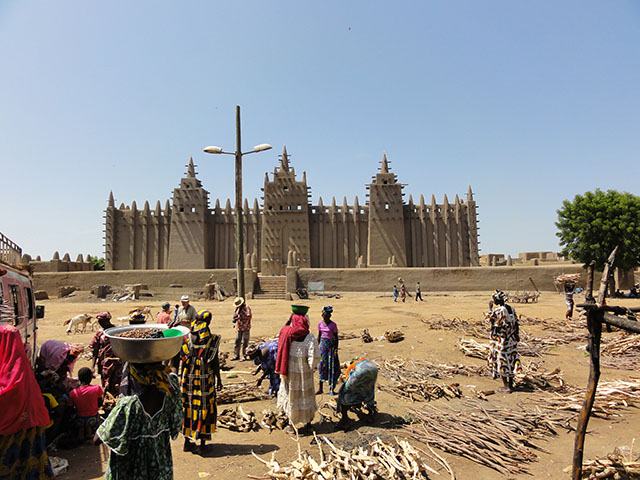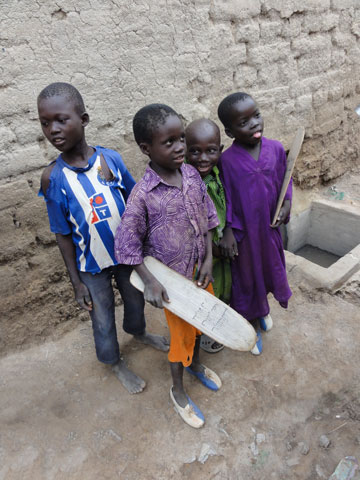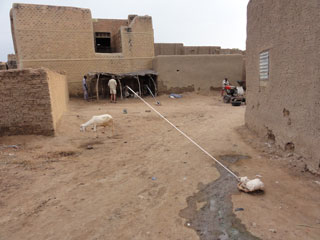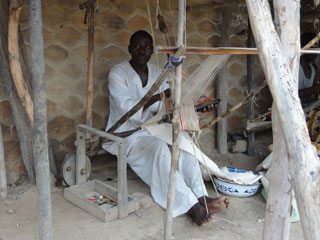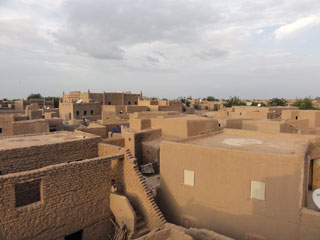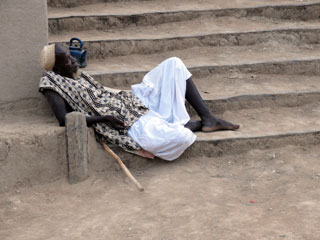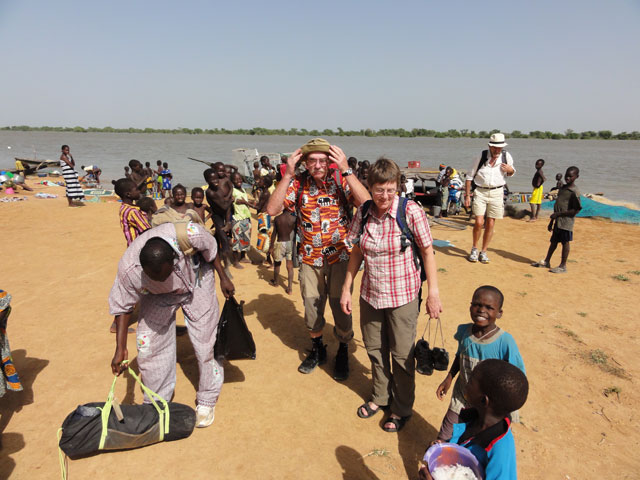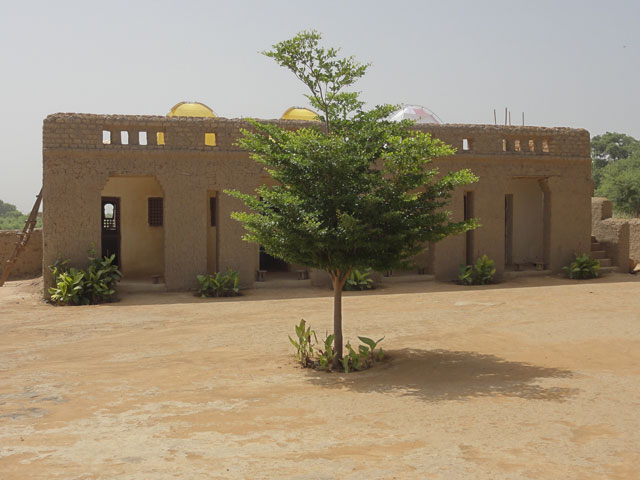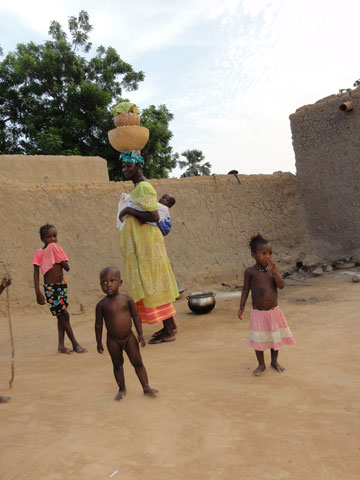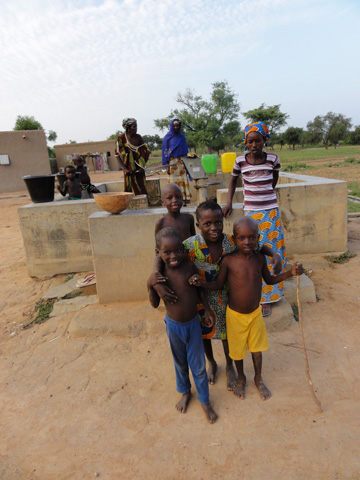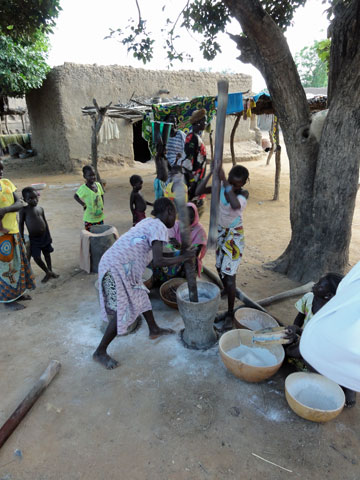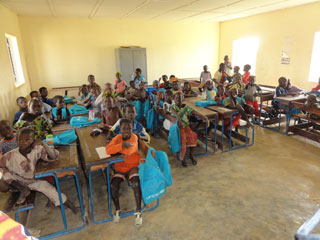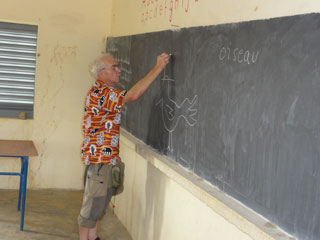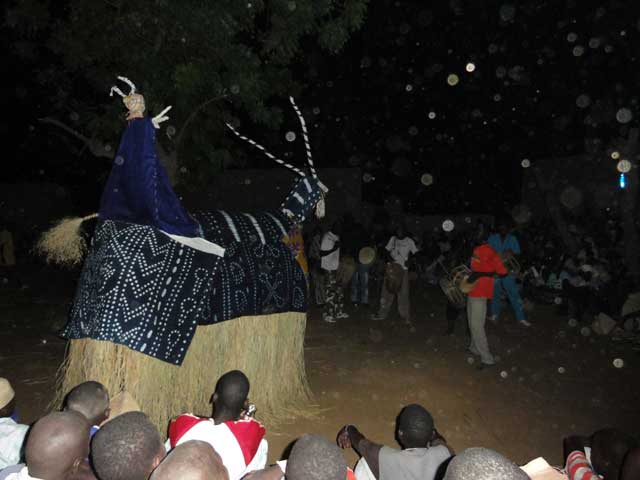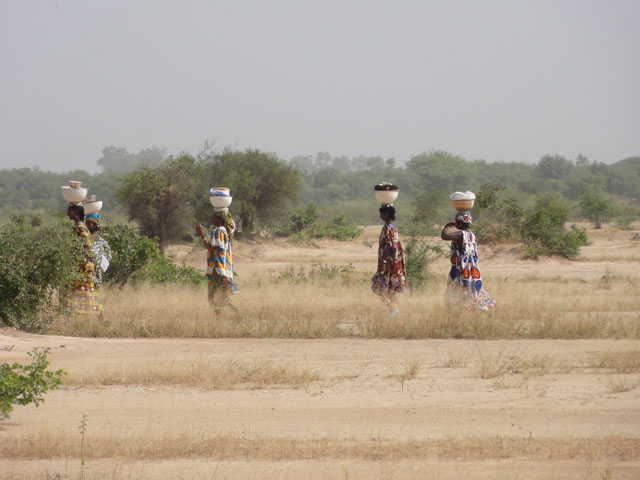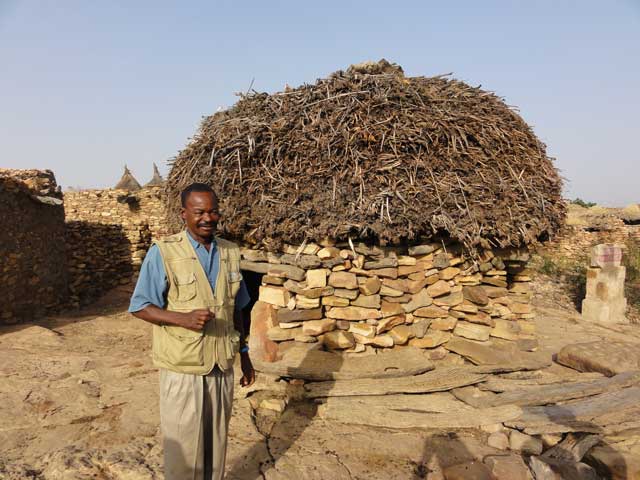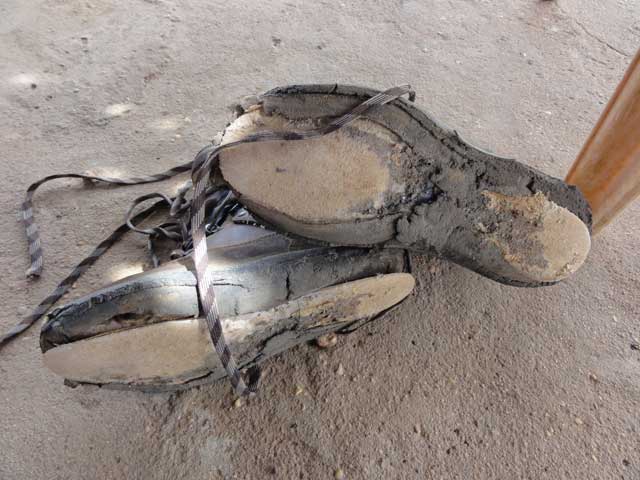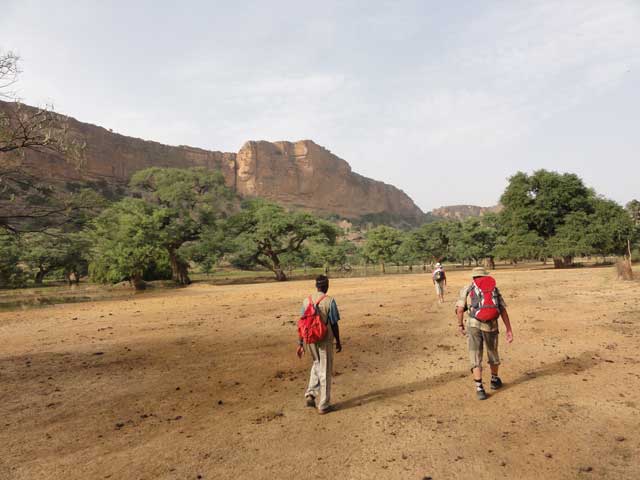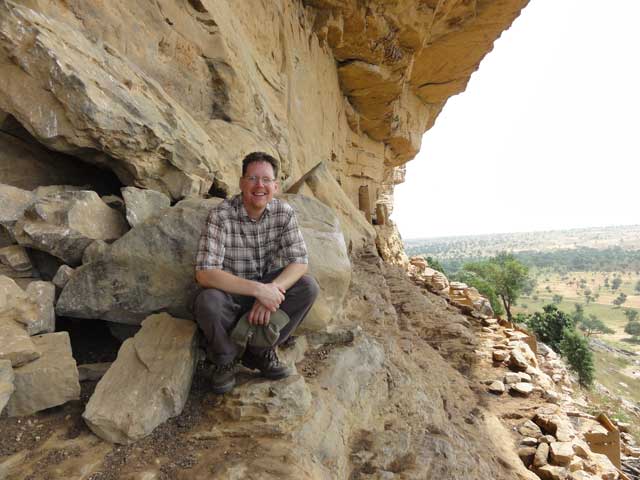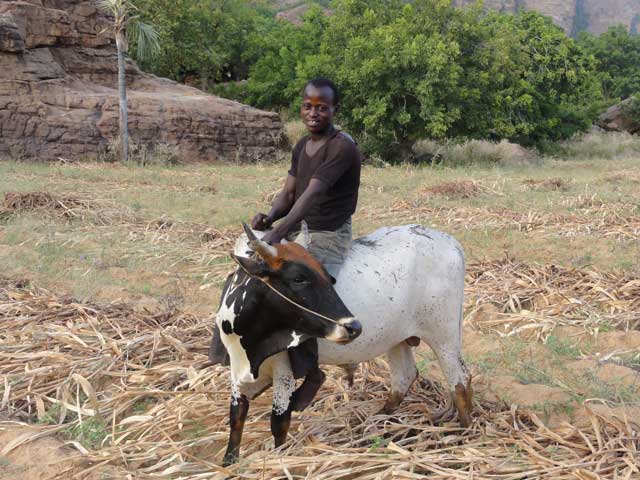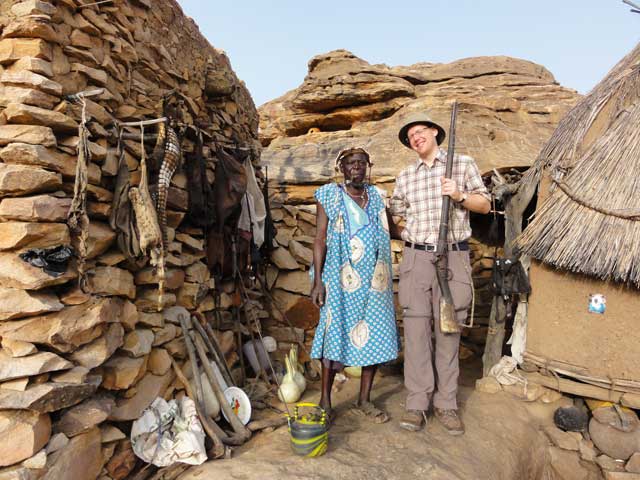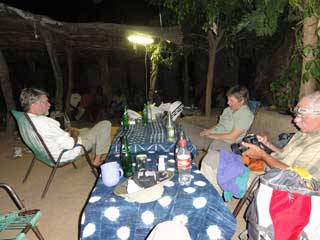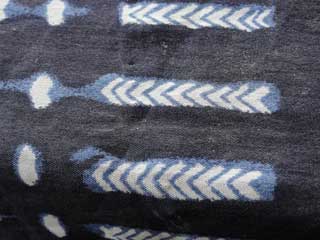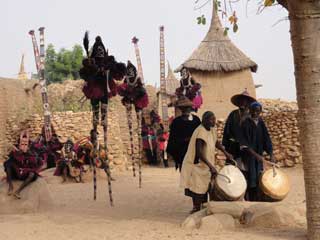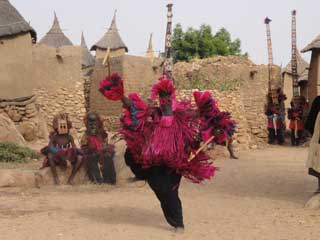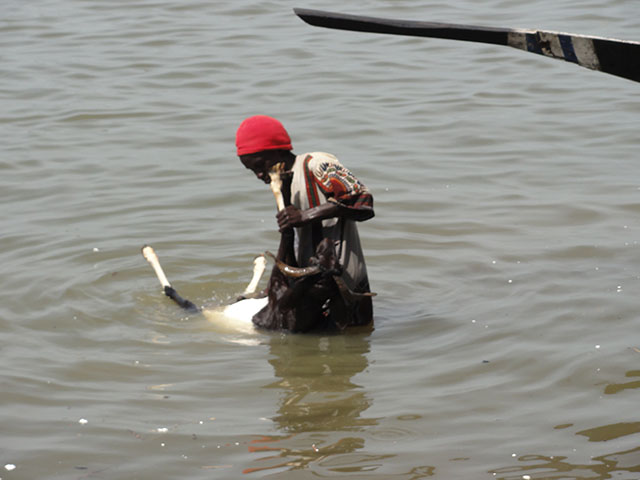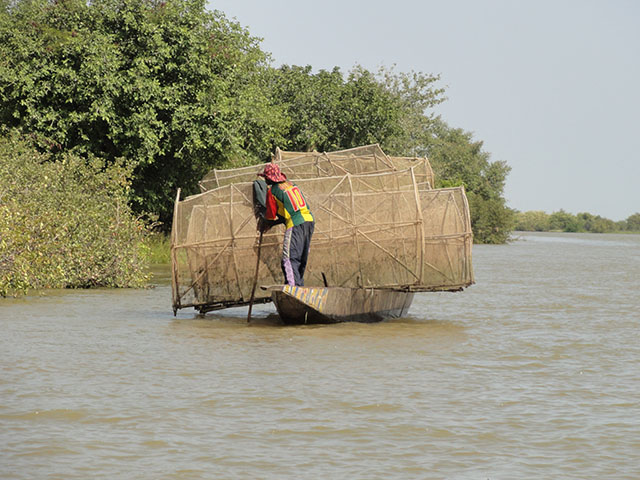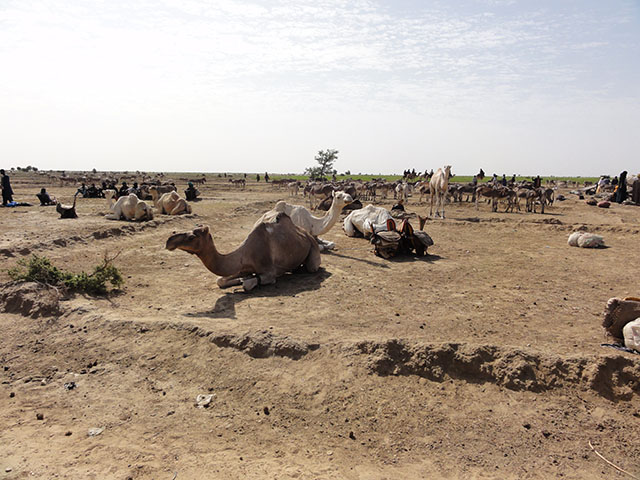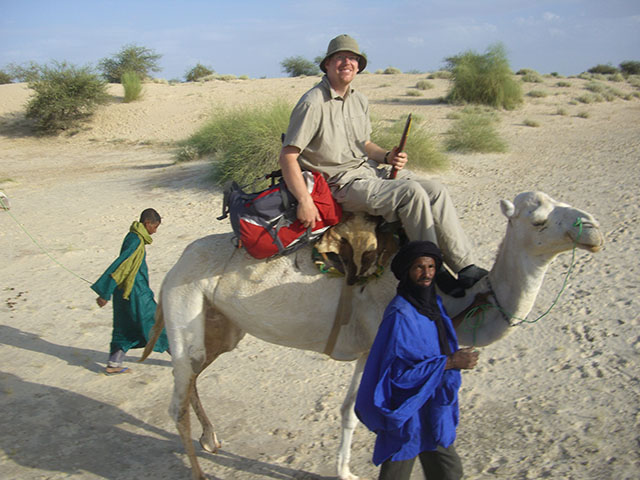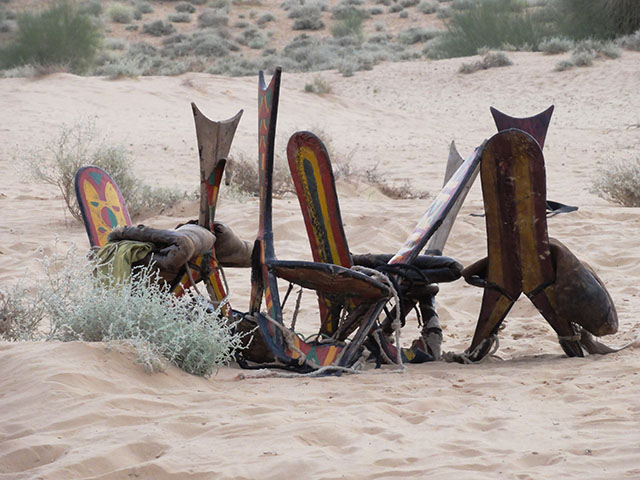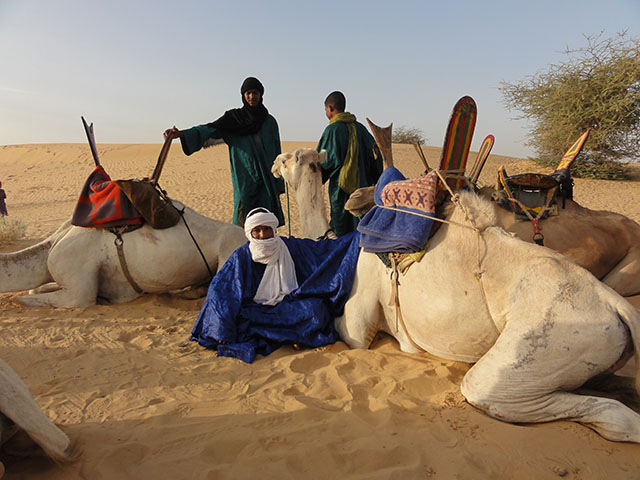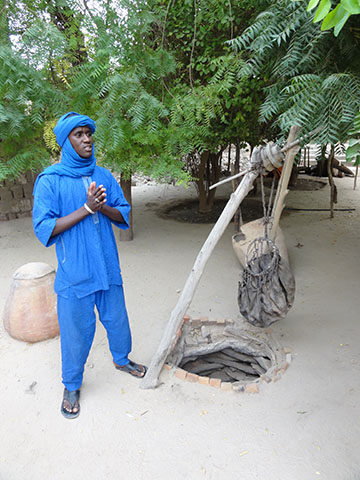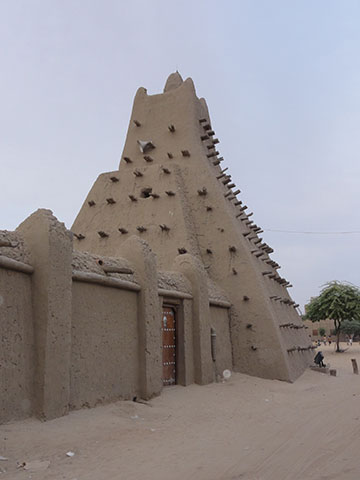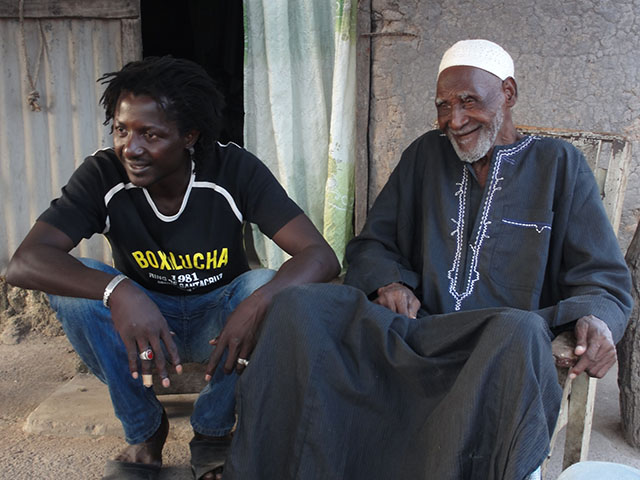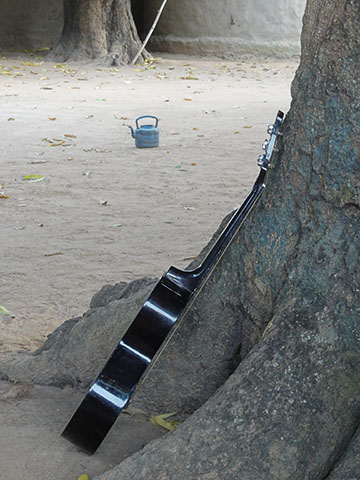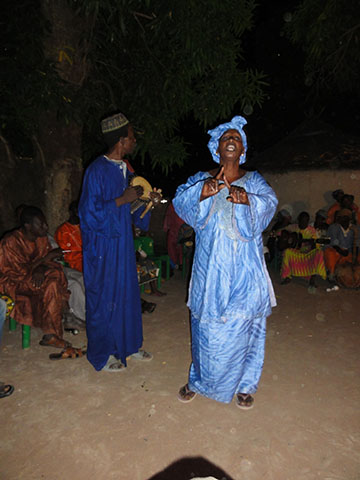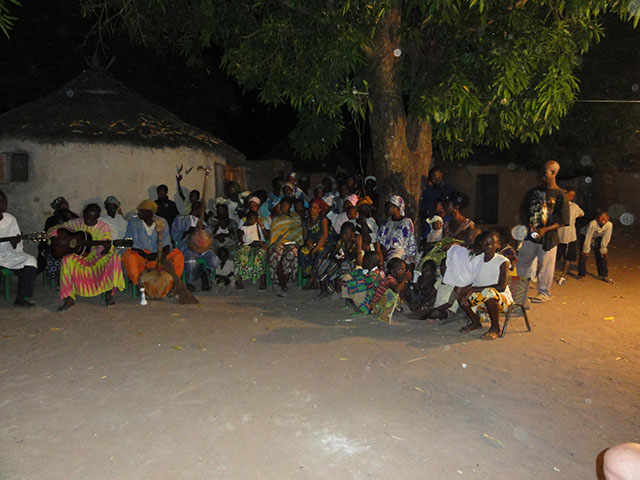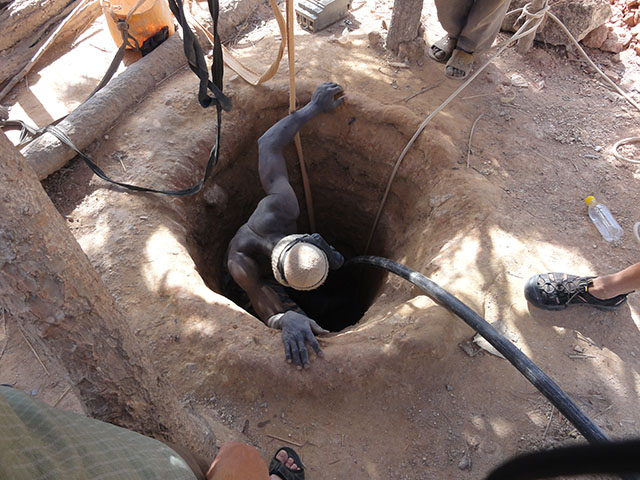Mali
MaliThe idea to go on another trip started in my head a little closer to my last trip than usual this time. It was partly due to the fact that my employer changed the terms for saved overtime - we would only be allowed to save max 100 hours after the new year 2011. So what would I do to use up that excess saved overtime? Another trip would be nice... I started looking for group travel of the kind that I like - no luxury but instead going to interesting places that are not overwhelmed by tourists. I have travelled with swedish company Läs & Res before and it was in their catalogue that I found what I thought sounded real interesting - a trip to Mali in western Africa. Mali is situated just south of the Sahara dessert - in fact the northern parts of the country is dessert while the southern part is much more fertile land. Mali has no coastline, but instead it is brought to life by rivers and especially the Niger river. Mali has a rich history - the Ghana empire, Mali empire and Songhay empire dominated the region between 400AD to the end of the 16th century. Those of us living in the western world are often surprised to find that rich cultures existed in several places in Africa long before europeans made their entrance, but that is more a reflection of the western attitude towards Africa than anything else.
Mali is today a stable democracy, and its people are proud about that. The consensus when talking to people was that things are improving in the country. It was a nice contrast compared to how things are back home to see people being so positive. Not everything is perfect even in Mali. The swedish foreign office changed its travel recommendations only a couple of weeks before we started our trip, and they recommended not to go to the northern part of the country, including Timbuktu. I started investigating the situation, taking to the foreign office, my insurance agency and so on. I finally decided I would go on the trip, but depending on the situation might not go with the group to Timbuktu. Three others decided not to go, leaving just four brave (?) travellers. Once I was there I never felt there was an unsafe situation and I participated in the complete journey. We made a round trip to many interesting parts of Mali, starting in the capital Bamako, going north via Segou to Djenne, were the most interesting part of the trip started. Living a few days in a small village at the banks of the Bali river, hiking in Dogon country, travelling by pinasse on the Niger river to Timbuktu, visiting the Toureg people in the dessert and finally visiting the musical people of the Kela village were other highlights. There are so many things and so many memories that a journey like this creates. This page, despite being longer and containing more pictures than would be ideal, is only a scratch on the surface. If you want the full experience you have to go there yourself! Bamako to SanAfter some of the seven original travellers decided not to go due to the foreign office recommendations about the Timbuktu are, there were only four of us left. We happened to arrive on the same Air France flight and were met by our guide Amadou and our driver. They took us to the hotel where we would stay for the night, as well as when we later came back to Bamako. The hotel standard was simple but okey. After a good nights sleep and some breakfast we started the drive to Segou.
The planning of the first few days travel - to Segou, San and Djenne - was good since there wasn't too many hours driver each day. It was quite hot so already these days we started to get used to the sweat on our bodys.
An interesting stop on the way from Segou was the visit to the Ndomo center, where there they explained how the traditional Mali handicraft textiles were made. We even got to try to make a small design of our own! There was the possibility to buy some textiles if you wanted.
DjenneDjenne is an old town located by the Bani river. It was founded in the 13th century and was a major trading center, even competing with Timbuktu. It is famous for its mud buildings whose architecture is full of meaning. It is also our guide Amadous home town! That meant that we could guide us in a very good way, tell us about the houses, the people and the traditions of Djenne. When the water is high, you cannot get to the town without passing over water. Our minibus had to be taken across by a small ferryboat. The most famous building in Djenne is the mosque. It is the largest mud building in the world and it is also a very impressive sight. It was built in 1907 on the site of an older mosque built in the 13th century. Note that it like all of the mud buildings are damaged by the rains every year and has to be renovated by applying new mud to it. Sometimes there are worse damage to from the rain to the mud buildings and whole walls may collapse. It isn't strange that the this way of building was deserted, but it is very lucky that the unique nature of Djennes mud buildings has been recognised and that they are preserved.
The mosque is located by the towns central square. On the other side of the square is the market were things from the surrounding region is possible to buy. One afternoon I was in the hotel when the sky grew dark. That was the start if the worst thunder storm I've ever experienced. There was not one second without lightning and it lasted for quite some time. The rain came down hard and the thunder was constant. It is amazing what mother nature can do!
Village of SirabuguDjenne is certainly worth all attention, but on our agenda was also a three day visit to a small village called Sirabugu. In the village, people of three different ethnic group live together. The Bozo are traditionally fishermen, the Fulani cattle breeders and the Bambara farmers. They lived in separate parts of the village but seemed to intermarry. We were picked up in Djenne by some people from the village in a Pinasse - the common type of river boat. After an hour or two we arrived in the village. There were people from all around coming to see us and greet us. Especially the children were enthusiastic about it all!
After the welcoming we were shown were we were to stay. They had built a little hostel for visitors like us. We could choose to sleep indoors or on the roof. We chose the latter - but since it could be a little cold in the morning when the fog rose from the river, we put up tents that we had brought along. This was the first of many nights that we slept on roofs, although later on in the Dogon villages we would sleep with only a mosquito net between ourselves and the stars.
Once we had settled in, we were taken for a little tour around the village. Se started in the part closest to the river where the Bozo lived. They were fishermen that mainly used what the Niger river could give. Close to them were lived the Fulani. They are traditionally cattle breeders. A little bit further from the river lived the third group, the farmers called Bambara. As I understood it, there could be some friction between the different groups in order places, competing for land, but in this village everyone lived peacefully together and even intermarried. The village chief spoke proudly about that.
The women of the Fulanis have a tradition to get tatoos, especially around the mouth. This is done around puberty, but I didn't understand if there was any deeper significance to this. We on a second tour around the village we visited the school.
We were lucky enough to be in the village one evening when they were having a feast, celebrating (I think) the successful harvest. There was music, dancing and such going on but they had also put a lot of effort creating animals out of hay and other things. I'm sure there was a deeper meaning to this that I unfortunately have forgotten.
Just before we decided to go back and get some sleep they fired an old muset in the air as part of the performance. What noise, what amount of smoke! We returned to Djenne in the morning the third day. We climbed a small horse cart and off we were. It was market day in Djenne and we people were going there to sell the products that they had - food, wood and other things.
In Djenne the minibus and driver waited for use in order to take us on the first step to the next major experience of the trip - the hike in Dogon country. Hiking in the Dogon countryBefore starting the hike in Dogon country we had a night in a good hotel in Bandiagara, the town closest to the Bandiagara escarpment or falaise which is the dogon mainland. Since we were now going to have to carry our own luggage during the five day hike, it was time to repack. When I was done, my small rucksack was quite full. In retrospect I should probably have left more things behind, but it is difficult to plan when you don't know what the terrain, conditions and arrangements will be. There were thing I left that I would have needed, but that worked out thanks to my fellow travellers. The Dogons arrived at the Bandiagara escarpment in the 14th or 15th centery. Before them, the Tellem people lived in the area. The Tellem are know mostly for the houses that they built on the rock face and the caves that they made to bury their dead high up the steep cliffs. These can still be seen today.The Tellem disappeared after the arrival of the Dogon, noone know where to or what happend to them. Maybe the landscape changed when the Dogon cultivators arrived, making it difficult for the Tellem hunters to survive, or maybe they were driven away. The Dogon were traditionally naturalists, although nowadays both Islam and Christianity are present. During the hike we had an local guide, but Amadou was still with us as well.
Already on the first day of the hike I was hit my an inconvenience - my hiking boots started falling apart! They were a pair of Meind boots that I had purchased before my trip to Peru in 2001. Now it seemed that the rubber material in them had dried out and started to crack. When we had lunch I tried to have them repaired by having the soles glued back on, but that didn't last long. My noon the next day, in a village on the plateau it was time to leave them behind. Since they had been with me on every trip I had made since 2001 it was like leaving behind an old friend. Ok, I may be exaggerating slightly there, but it was still kind of sad...
Now I only had my sandals left. They are good for walking but the cram-cram was a problem. Cram-cram? Plants with really sticky leaves that aren't very nice to come into contact with then your wearing sandals... We were walking along the falaise the complete hike. We started below on the plain, ended the first day by climbing up to the plateau, continued there the next day and then climbed back down and so on. The plateau was quite rocky and you had to be careful where you put your feet. The plain was a but dusty and the trail was often like walking on the beach. We had to take the heat (>40 deg C) into consideration so we woke with the sun and started walking as soon as possible. Between noon and three a'clock we usually rested in a small campement in a village before we continued the second half of the days walk. We had to arrive before dark since when it became dark it was really dark.
We started in, or rather on, small hostels called campements in the villages that we passed. We slept under the stars on top of the buildings with only a mosquito net to cover ourselves. There very basic possibilities to take a shower (usually taking water from a bucket and pouring over yourself) and the toilets were often of the "hole in the ground" viarity but that was no problem. The good thing was that even though there are tourist hiking in the area, we were far into a rural area and met people in their everyday life. That is what I really like to do on a trip like this!
After a couple of days the heat started to be a problem for me and I lost some strength, but with some help from the local guide and my fellow travellers - and some extra salt intake - I could go on.
The village of Tereli had a very special experience for us. There is is possible to get to se the traditional dances des masques, were dancers are dressed in different masks, each with a specific meaning based in the traditional naturalist beliefs.
Although it always is a strange feeling watching people showing their heritage to tourists, I can really recommend taking a pause to watch these dances. Try to make sure that you have a guide that can explain the meaning of the different masks and the performance in total. Mopti and the Niger riverWhat is there to say about Mopti? It's a big town and it's on the Niger river. Wandering around the market can be interesting and looking at the craftsmen building boats is nice as well. Although Mopti was nice it was not one of the major sights of the journey.
As usual in countries like this, the food you eat i the small simple restaurants is no problem. Neither is the food in the small villages that are prepared with simple means by the local women. Hotel restaurants in the tourist hotels are however places you should be careful in. The last night in Mopti I ate something in the hotel restaurant that upset my stomach and made me extremely weak the next few days. Unfortunately it affected the rest of the trip a little bit as well, so be warned! It was now time to take the natural transport route - the Niger river - to that famous town of Timbuktu. In the second day we would cross the border to the part of the country that the foreign office adviced against, so I was a little anxious about that as well, even though the guide assured us that it was no problem. It turned out that he was right. It is a pity that I more or less completely missed out on the views on the first day in the pinasse on the Niger. I was lying down trying to sleep when I wasn't throwing up or climbing to the back of the boad where the simple toilet arrangement was located. Oh well, things like these just have to be endured. After a night camping on the river bank I felt a little bit better and I could at least start to look around.
We stopped a few times along the way, sometimes to take a look at a village, sometimes to get some food from the market. At one place we first stopped to look at the market, then we went to the other side of the river. There we found a big parking place! Well, it was not for cars of course, but instead for donkeys and camels. People left their animals there and then caught a ride with a boat to the market on the other side of the river. Cool!
After a second night camping on the river bank we arrived at Timbuktu. TimbuktuThe town of Timbuktu has a long and interesting history as a center for the trade routes in the Sahara region, but also as an important centre for islamic learning. As we arrived we went to a hotel and waited for a little while before we met with a representative of the Tuareg camp that we would stay in over the night. It was quite close to town but getting there was still an adventure, since we were riding camels there! I got up onto my camel and to start with everything was as expected. Then we stopped while they were correcting a saddle for one of my fellow travellers. The man that had been walking beside my camel went to help. It was then that my camel decided it wanted to lie down. Have you seen a camel lie down? First it bends the front legs, meaning that its back tilts forwards significantly. Then it bends its back legs and finally bends it front legs even further, settling down. I was caught by surprise when suddenly everything was leaning forwards. In order not to fall off I grabbed the tall front of the saddle. Then the saddle broke and I fell forwards onto the camels neck and on down on the ground! I was unharmed, but was mostly afraid of how the camel would react to such a weight falling onto his neck. Fortunately it was pretty calm about it.
After changing the saddle and getting back up we continued to the turareg camp. It is clear that these nomad traders nowadays live hard lifes. They were friendly and proud but clearly in need of all the income they could get. Our visit made a small contribution to that end.
Back in town in Timbuktu, it was clear that the travel recommendations of the western foreign offices had a serious impact. There were very few tourists in town, something that obviously hit the locals hard. They all tried to sell something to the few tourists left, but they never were too pushy or aggressive in any way. I really hope that the tourists will return so that they can contribute to the locals making a decent living.
The south of Mali and BamakoWe left Timbuktu in a more modern way than we arrived. The plane to Bamako stopped in Mopti where we had to wait for a while since the US military was practicing parachuting over Bamako! Eventually we arrived in Bamako, only to continue the next day to the southern parts of Mali were we were to stay in the small village of Kela. There we stayed in a small but comfortable campement.
In the first evening, the locals arranged a small concert for us, something that I enjoyed very much. The second evening the local youth gathered together with the owner of the campement and spontaneously started to sing and dance. That almost made an even greater impression than the performance the first night.
We made a small excursion one day to a golf mine. It was owned by a company but one could pay to get the chance to dig for gold. Conditions seemed pretty harsh and my guess is that it would be hard to made the fortune that people were dreaming of.
These days were a bit more relaxed and comfortable compared to most of the trip, something that was a good thing. Also I still had some small stomach problems that drained me of some energy so the opportunity to take it easy was very welcome. The last day and a half was spent back in the big city, Bamako. It is a very african city is its mud streets and mix of buildings. It is very busy with lots of traffic and people everywhere. My fellow travellers liked it, but unfortunately I'm not a fan of big cities generally and Bamako didn't appeal to me. I had an extra day in Bamako before my flight left so I decided to book a room in a luxury hotel (normal european business standard) and let myself just relax. In hindsight I probably should have used that last day to get some final feel for Mali, but at the time it was very good to sit by the pool and read a good book. We had experienced so much already that I guess I was already full and had to digest everything before I could be receptive to new input. SummaryI must thank our tour leader and guide, Amadou Thiocary, and the local tour operators Mali Travel Tours. Amadou did a great job during the whole journey, taking care of use while proudly showing us his country. If you ask for him, you can't go wrong. Just like most other trips I've been to, this one isn't for everyone. If your idea of a good vacation is a luxury hotel by the beach with pools and everything included then this is not it. If however you find such a vacation dull and boring and want to see the world, meet people of a different background and learn new things about both past and present, then Mali has every possibility to satisfy your dreams. All text and pictures except maps Copyright Staffan Nilsson 2010 - 2011 Contact me at publicinfo@staffannilsson.eu
My travel pages have had
|
|||||||||||||||||||||||||||||||||

